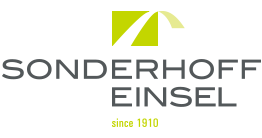The
draft law for the partial revision of the Patent Act was passed and adopted by
the Cabinet on May 10, 2019 and announced on May 17, 2019. This revision will
create a new system for collecting evidence in a potential infringement matter
where an expert will have the opportunity to carry out an on-site investigation
which is necessary for the provision of evidence in an infringement case. In
addition, the calculation guidelines for compensation amounts will be revised
(the same changes will also be made to the Utility Model, Design and Trademark Acts)
and the scope of protection for designs will be extended.
The
below-mentioned revisions are to be implemented within one year from the
announcement.
I. Partial revision
of the Patent Act
1. Established a
system where neutral experts can carry out on-site investigations
A
system will be created under which, in the event of suspicion of a patent
infringement and after the filing of an infringement action, the aggrieved party
may request that neutral experts appointed by the court carry out on-site
investigations at the production facility of the infringing party which are
necessary for the provision of any evidence of infringement and to submit a
report to the court (Art. 105bis Patent Act and others).
2. Revised the
calculation guidelines for compensation amounts
a)
Previously, it has not been possible for a patentee to claim as damages a portion
of the patent infringer’s profits which exceeds the patentee’s production
capacity. With the new amendment, it will now be assumed that the infringer had
a license for said portion, and the patentee can claim damages corresponding to
the license fee (new Art. 102 Par. 1(2) Patent Act).
b)
For the calculation of the damages corresponding to the license fee, the court
will consider a license fee which would have been negotiated on the presumption
that there had been an infringement (i.e., possibly a higher license fee than
that of a normal license agreement) (new Art. 102 Par. 4 Patent Act). These
changes will also be made to the Utility Model Act, the Design Act and the
Trademark Acts.
II. Partial revision
of the Design Act
1. Extension of the
scope of protection
Images
that are not applied to objects, e.g. images stored in a cloud and made
available via a network, and exterior views of buildings or interior designs etc.
can now also be protected as designs (Art. 2 Design Act).
2. Revision of the
system for related designs (system that allows the registration of designs that
are similar to one’s own design application or registered design (principal
design))
(Art. 10 Design Act)
It
is now possible to register multiple designs developed under a unified concept. The new changes include: a) the time limit
for filing related designs is extended to 10 years from the filing date of the principal
design (previously it was until disclosure of the registered principal design,
i.e., about 8 months from the filing date); and (b) designs similar only to
related designs shall also be granted registration.
3. Change of term
The
term is extended from “20 years from the date of registration” to
“25 years from the filing date” (Art. 21 Design Act).
4. Simplification of
the application procedure
a)
Multiple applications may be filed; i.e., several designs may be combined in
one application.
b)
Classifications will be abolished in order to allow a flexible designation of
the subject-matter.
5. Extension of the
definition of indirect infringement
By
defining subjective factors such as “the knowledge that an object can be
used for the working of a design”, actions such as the manufacture and
import of infringing products that have been disassembled into individual parts
in order to escape control can now also be controlled.

